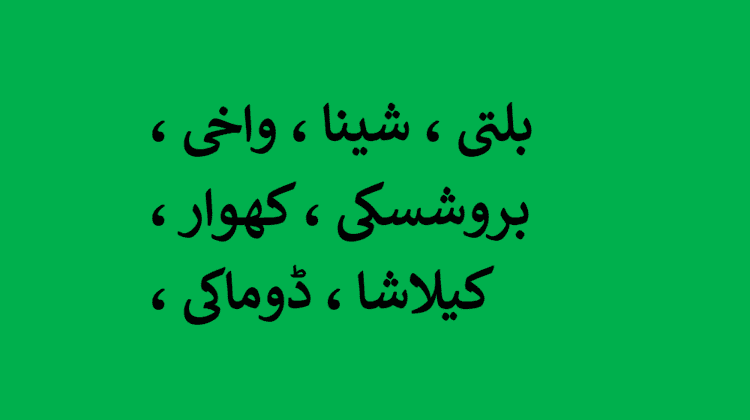Native to Pakistan ISO 639-3 dmk | Native speakers 340 (2011) Glottolog doma1260 | |
Region Nager and Hunza Valleys Language family Indo-EuropeanIndo-IranianIndo-AryanDardicShinaDomaaki Similar Hijra Farsi, Gawar Bati language, Fay ki Boli | ||

Domaakí, also known as Dumaki or Domaá, is a Dardic language spoken by a few hundred people living in Gilgit-Baltistan, Pakistan.
Domaaki is the traditional tongue of the Dóoma (sg. Dóom), a small ethnic group scattered in extended family units among larger host communities. According to local traditions, the Dooma's ancestors came somewhere from the south; according to the Domaaki speakers themselves their forbearers arrived in the Nager and Hunza Valleys from Kashmir, in separate groups and over an extended period of time via Baltistan, Gilgit, Darel, Tangir, Punial and even Kashghar.
In former times, Domaaki speakers traditionally worked as blacksmiths and musicians, but nowadays they are also engaged in a variety of other professions.
In almost all places of their present settlement the Dooma, who are all Muslims, have long since given up their original mother tongue in favour of the surrounding Dardic Shina. Only in the Nager and Hunza Valleys has Domaaki survived until the present day.
Domaaki can be divided into two dialects: Nager-Domaaki and Hunza-Domaaki. Although there are considerable differences between these two varieties, they are not so severe as to prevent mutual intelligibility.
All Domaaki speakers are proficient in the languages of their host communities (Burushaski and/or Shina) as well as in their own mother tongue. Many of them also know Urdu, which they have learned at school or picked up while working in other parts of Pakistan.
From a historical point of view Domaaki is a language of the North Indian plains, affiliated to the Central Group of New Indo-Aryan languages. However, due to its long-standing separation from its place of origin and (still on-going and ever increasing) intense contacts with other languages Domaaki has lost or transformed many of its Central Group related features. This now places the language in many aspects much closer to its Dardic neighbours than to its Midland cousins.
Presently Domaaki counts less than 350 (mostly elderly) speakers – approx. 300 of them related to Hunza; around 40 related to Nager – and is thus to be considered a highly endangered language.
